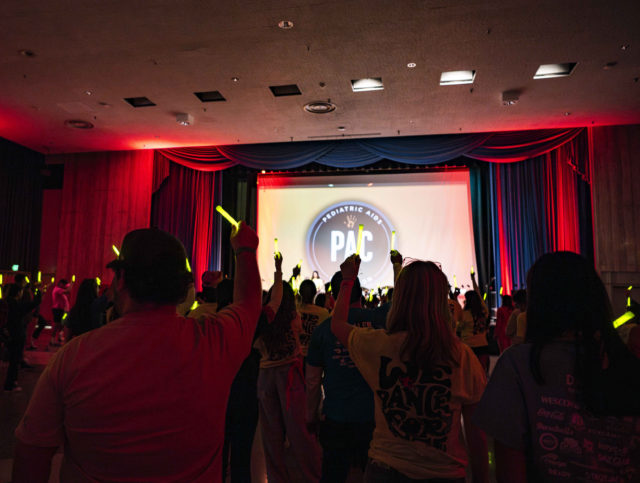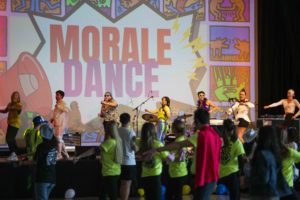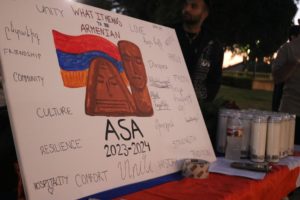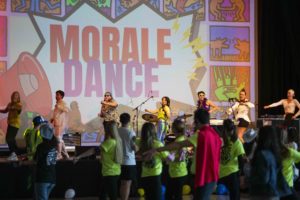This post was updated April 7 at 7:59 p.m.
The 2024 Dance Marathon vigil, hosted by the Pediatric AIDS Coalition at UCLA, spoke to the humanity of those living with HIV/AIDS beyond their conditions.
The vigil highlighted PAC’s work to raise money and awareness for Pediatric AIDS research with a series of guest speakers and group activities. The proceedings included a video message from Jake Glaser, member of the Elizabeth Glaser Pediatric AIDS Foundation, and concluded with the attendees tying bands of red yarn around their wrists – a symbol of commitment to combating the stigma surrounding AIDS/HIV. Sasha Avakyan, third-year molecular, cell and developmental biology student and president of the Pediatric AIDS Coalition, said the vigil’s goal is to treat the perceptions surrounding those with HIV as seriously as its condition.
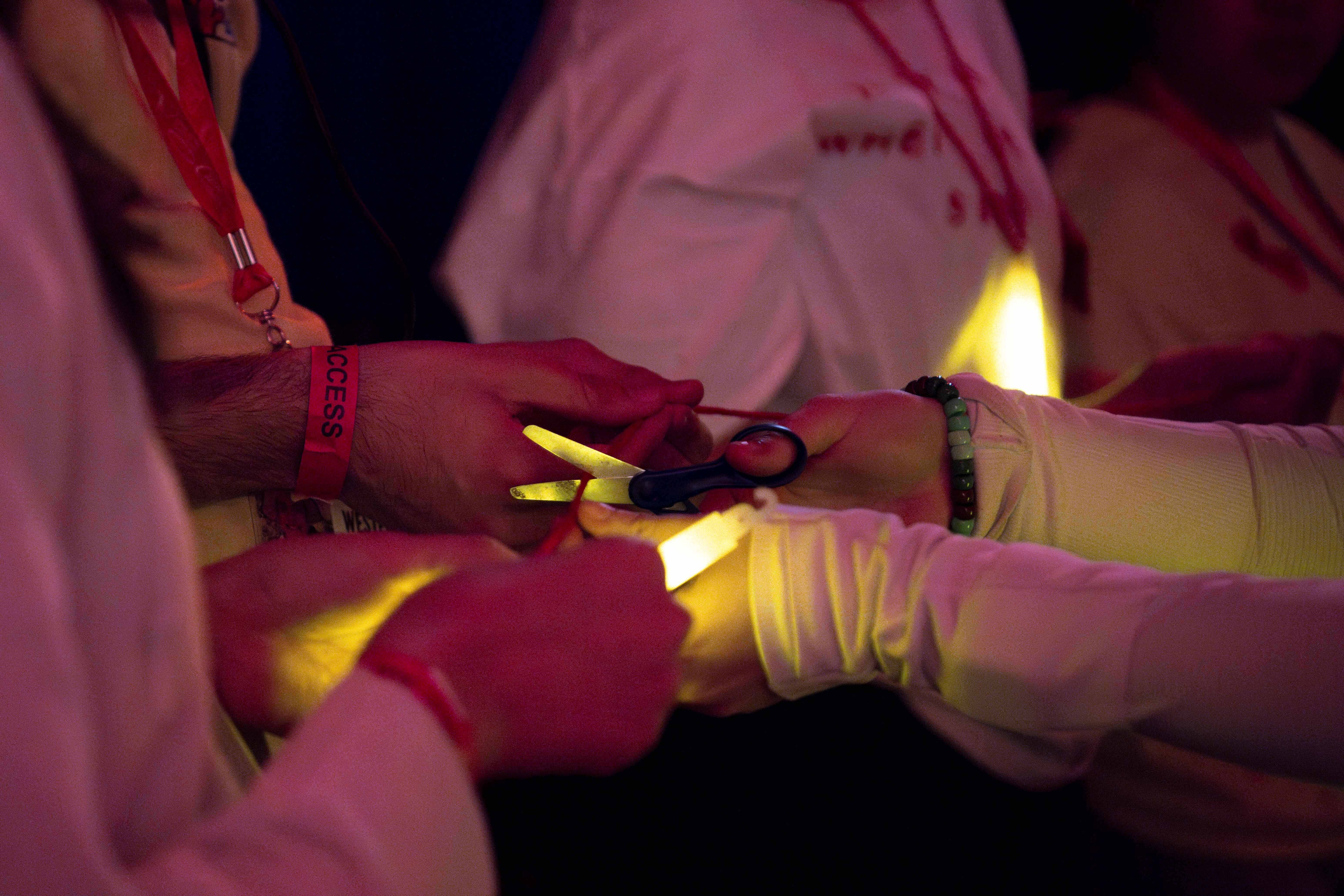
[Related: Dance Marathon brings performances, HIV/AIDS advocacy to Ackerman Grand Ballroom ]
“It’s mostly about being able to talk about it (HIV/AIDS) without any fear or repercussions, a lot of which comes with this epidemic, but also creating a global impact through EGPAF,” Avakyan said. “I think a lot of people leave Dance Marathon, and they are able to forget about this event … but vigil is a time to remind them why they are here and why we’re doing what we’re doing.”
Darely Rodriguez, a member of The Laurel Foundation and one of the guest speakers at the vigil, said the event is both educational and entertaining, allowing people to learn more about pediatric AIDS/HIV throughout a day of community and fun-filled activities.
“The cause that they (PAC) do and what they are doing is super important and critical for women’s health, men’s health, anyone who happens to live with HIV and AIDS,” Rodriguez said. “It’s something that is super big and still hasn’t had the proper coverage that it should have.”
Rodriguez attended her third Dance Marathon, along with her younger siblings, and said she was happy to see the enthusiasm of everyone in attendance. She hopes that people leave the event in good spirits and with a more profound understanding of pediatric AIDS and HIV.
“I just hope they go out with a little fun from the dancing, but (also) feeling a bit educated overall,” Rodriguez said. “It’s an attempt to unite with people and interact and get to know each other’s stories.”
As the vigil approached its end, PAC members brought attendees together in a circle around Ackerman Grand Ballroom. Then, they unraveled a spool of red yarn to be held by every participant as PAC speakers cemented the group’s united goal of destigmatizing HIV/AIDS and raising awareness of the continued struggle of those afflicted. Finally, the yarn was cut and tied in strands around attendees’ wrists as reminders of the community built at the Dance Marathon. Daphne Zhang, a first-year pre-human biology and society student and member of the organization Bruins Fighting Pediatric Cancer, said she was not expecting her first Dance Marathon to be so impactful for herself.
“I was mostly just here to learn more about what this event is,” Zhang said. “But after coming here it really sort of blew my mind away with how serious and sentimental it was. It was something that I genuinely found interesting and really think is important.”
[Related: Heartfelt vigil shines light on HIV/AIDS community during UCLA Dance Marathon ]
According to Glaser, UCLA Dance Marathon has raised more than 6 million dollars over the last 23 years to research and bring awareness to AIDS/HIV in 19 countries. These contributions have helped EGPAF to prevent thousands of cases of HIV and AIDS in majorly affected countries and eliminate the prejudice faced by millions of afflicted individuals. Zhang said it is important for people to identify those struggling with HIV or AIDS by the humanity shared among all people, rather than by their conditions.
“I feel like it’s very easy to say ‘this many people have HIV’ or ‘this many people have AIDS’… but when you actually meet them face to face, I feel like that is something very different,” Zhang said. “Something I take away (from the vigil) is just knowing that these are real people and they have their own stories and experiences outside and inside of their HIV and AIDS experience.”
